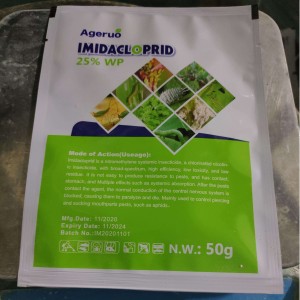Yes, imidacloprid can kill grubs, and it is commonly used in both agricultural and turfgrass management to control grub infestations. Grubs, which are the larval stage of various beetles, can cause significant damage to lawns, golf courses, and agricultural crops. Imidacloprid is effective against several species of grubs, including those that belong to the Japanese beetle, chafers, and other common beetles that target turfgrass.
How Does Imidacloprid Work on Grubs?
Imidacloprid, being a systemic insecticide, is absorbed by the roots of plants and moves through the plant system. When applied to turfgrass or soil, imidacloprid is absorbed by plant roots and affects grubs when they feed on the roots of treated plants. It works by disrupting the normal transmission of nerve signals in the insects, leading to paralysis and eventually death.
This system of action is particularly effective because it targets grubs when they are feeding on the root system of plants, providing control before they can cause significant damage to crops or turf.
Effectiveness of Imidacloprid on Grubs
Imidacloprid is highly effective in controlling grub populations, especially when applied early in the season before grubs cause extensive damage. It is particularly useful for preventing grub infestations as it provides residual protection against new grubs for an extended period. This makes it ideal for use in both preventative treatments and for controlling active grub populations.
For best results, imidacloprid should be applied to the soil when grubs are in their early stages of development, typically during late spring or early summer when they are feeding actively. Since imidacloprid works systemically, it can be effective for weeks, continuing to protect the plants as long as it is present in the soil.
Advantages of Using Imidacloprid for Grub Control
- Long-Lasting Control: Imidacloprid provides long-term protection, reducing the need for frequent applications.
- Effective for Multiple Pest Species: In addition to grubs, imidacloprid can control other pests, such as fleas, termites, and certain types of ants, making it a versatile product.
- Low Risk to Beneficial Insects: When used correctly, imidacloprid has a low risk to beneficial insects such as bees, especially when applied according to label instructions.
Safety Considerations and Application Guidelines
While imidacloprid is generally considered safe when used as directed, it is important to follow safety guidelines to minimize any risk to humans, pets, and non-target species. Here are a few key points:
- For Turfgrass and Lawns: Imidacloprid is commonly used in granular or liquid formulations for treating lawns. When applying to turf, make sure to water the area after application to ensure the product reaches the root zone.
- For Pets and Livestock: Imidacloprid is used in veterinary formulations to control fleas and ticks, and care should be taken when applying it near pets or livestock.
- Environmental Safety: Although imidacloprid is generally safe for the environment when applied as directed, excessive use or runoff into water sources can harm aquatic organisms.
Conclusion: Does Imidacloprid Kill Grubs?
Yes, imidacloprid is effective in killing grubs. It works by targeting their nervous system when they feed on the roots of treated plants, making it a valuable tool for turfgrass management and agriculture. For homeowners dealing with lawn grubs or farmers managing crop pests, imidacloprid offers a reliable, long-lasting solution to control grubs and prevent damage.
Frequently Asked Questions about Imidacloprid and Grubs
- How long does it take for imidacloprid to kill grubs?It usually takes a few days to a week for imidacloprid to kill grubs, depending on their developmental stage and the concentration used.
- Can imidacloprid be used on all types of grass? Yes, imidacloprid is safe for most grass types when applied according to label instructions. However, always check the product label for specific recommendations for your type of turf.
- Is imidacloprid safe for pets? While imidacloprid is low toxicity to pets when applied to turf or soil, it’s important to keep pets away from treated areas until the product has dried or settled.
- How often should imidacloprid be applied for grub control? For best results, apply imidacloprid once a year during the late spring or early summer when grubs are actively feeding.
- Can imidacloprid be used in organic farming? No, imidacloprid is a synthetic chemical and is not allowed in organic farming practices.
Read more:
Pets and Imidacloprid: How Safe Is It for Your Dog or Cat?
What Insects Does Imidacloprid Kill and Uses?
Chlorantraniliprole vs Imidacloprid Insecticides
Clothianidin, imidacloprid, and thiamethoxam
Imidacloprid vs Acetamiprid
Imidacloprid vs Bifenthrin
Emamectin Benzoate vs. Imidacloprid
Chlorantraniliprole vs Imidacloprid Insecticides
Post time: Jan-14-2025








